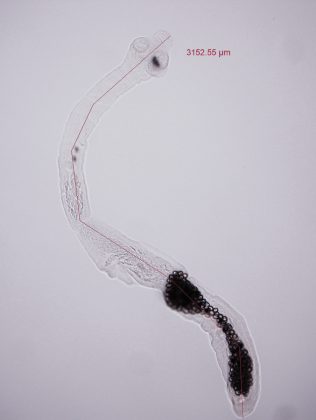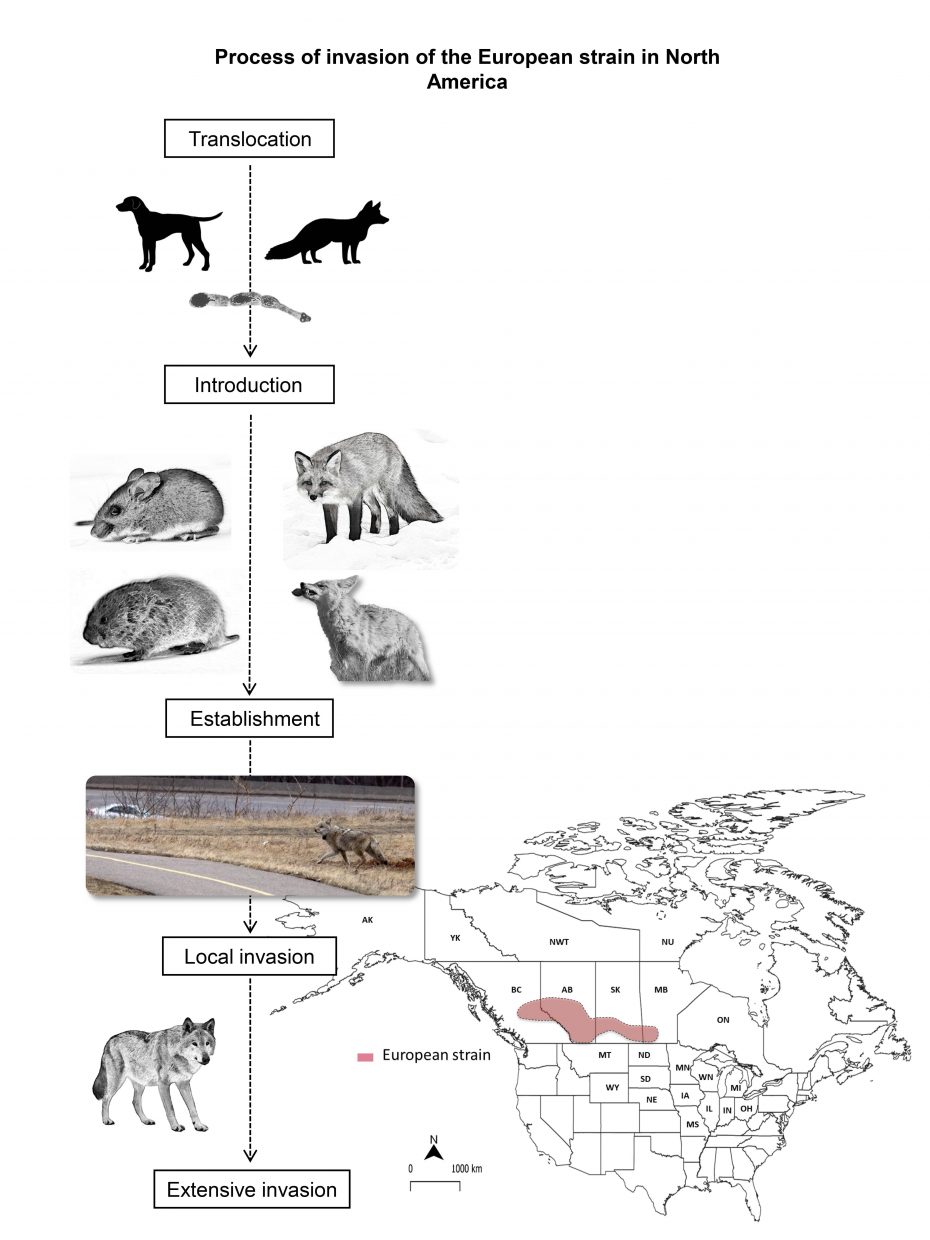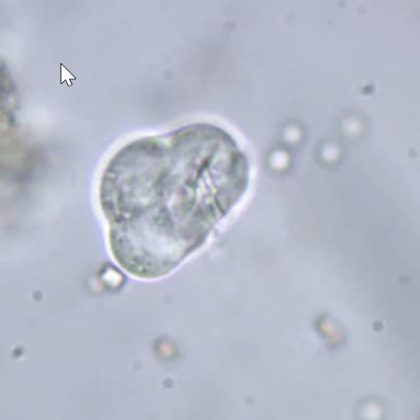Invasions by parasites with complex life cycles
The latest Paper of the Month for Parasitology is “A review on invasions by parasites with complex life cycles: the European strain of Echinococcus multilocularis in North America as a model”
Biological invasions have significant impacts on biodiversity, community structure, and ecosystem processes, often leading to the emergence of diseases that could have significant economic, public health, and conservation implications. These invasions are usually driven by anthropogenic disturbances on ecosystems and the increased movement of goods and people on a global scale. Therefore, co-introductions of parasites with their original host in a new area can create opportunities for new host-parasite associations and the emergence of diseases in native host species. Indeed, emergent diseases are considered a significant subgroup of biological invasions due to their rapid increase in incidence and geographic range, which can lead to a disease outbreak or the establishment of new endemism.

The tapeworm Echinococcus multilocularis is the causative agent of human alveolar echinococcosis (AE), one the most severe foodborne diseases in the Northern Hemisphere, which is considered an emerging pathogen in some parts of the world. This parasite has a complex life cycle which is completed in a two-host predator-prey system involving small mammals as intermediate hosts (mostly rodents, e.g. voles) and canids as definitive hosts (e.g. red foxes and coyotes, but also domestic dogs). While AE was considered sporadic in North America, in the last years there has been an increase in the number of human cases. Moreover, a European-like strain of E. multilocularis was detected in wild, domestic, and human hosts in Western Canada, indicating a possible recent invasion of this strain, which could potentially increase the risk of infection in humans and domestic animals.
Using the invasion process of this strain as a model, we aimed to analyze the ecological and evolutionary factors that play a significant role during the invasion of parasites with complex life cycles transmitted in predator-prey systems, focusing on what facilitates or hinders the invasion process. We discussed the effect of host-parasite and host-host interactions, the effects on the native parasite gene pool, the competition between parasite strains, and the possible impact on host-parasite and predator-prey interactions. Based on this, we proposed an ecological framework to investigate the invasion process of these parasites from an eco-evolutionary perspective integrating concepts used in biological invasion and disease ecology research. The model helps identify key ecological processes occurring at different scales in space and time during the invasion process, which is crucial for predicting and mitigating the outcomes of these invasions and the possible emergence of diseases. We finally highlighted the need for integration between the study of biological invasions and disease ecology to assess the risk of invasion of hosts and their parasites and develop management strategies.

The paper “A review on invasions by parasites with complex life cycles: the European strain of Echinococcus multilocularis in North America as a model”, Maria A. Santa, Marco Musiani, Kathreen E. Ruckstuhl and Alessandro Massolo, published in Parasitology, is freely available open access.
Image credits: Alejandra Santa et al.







